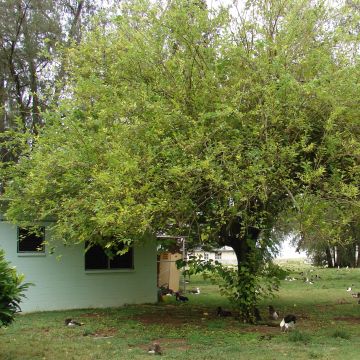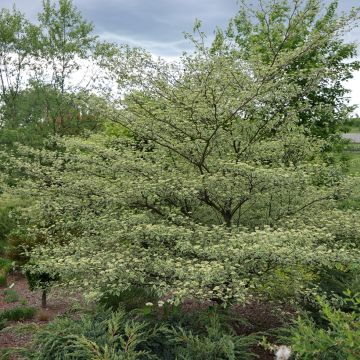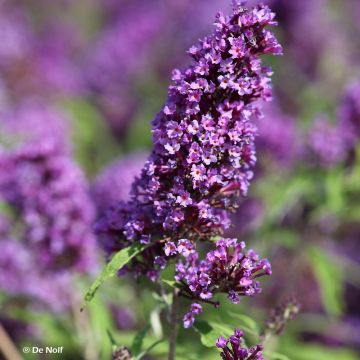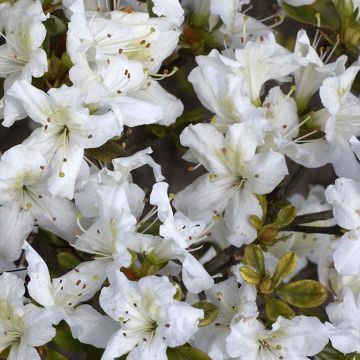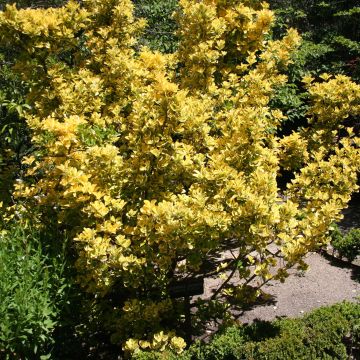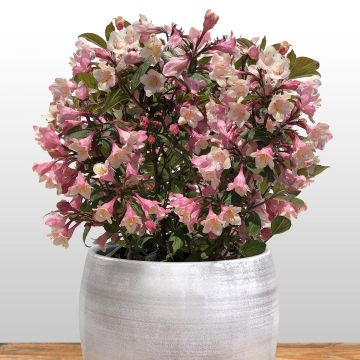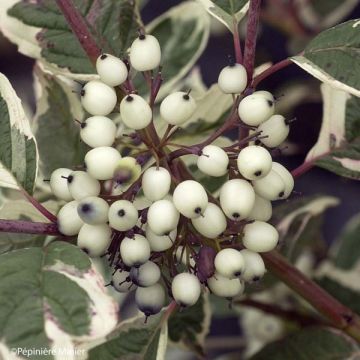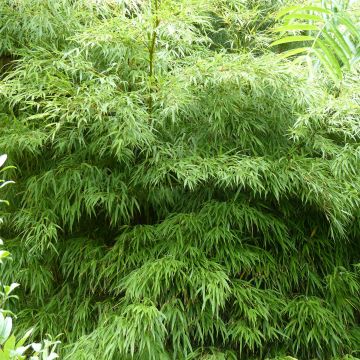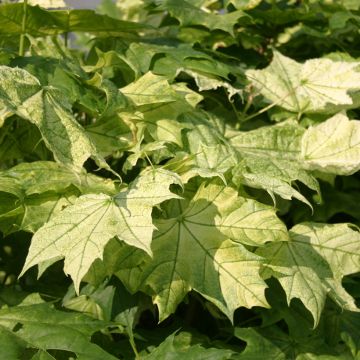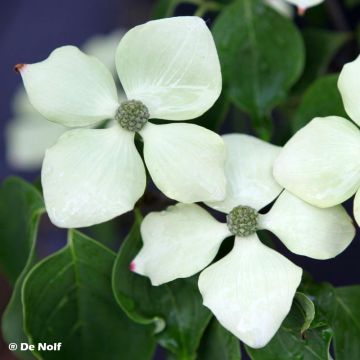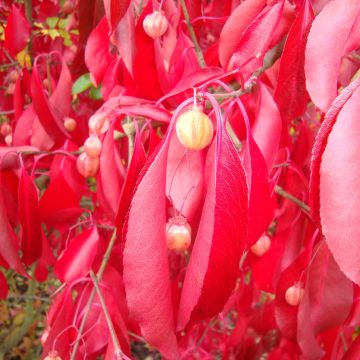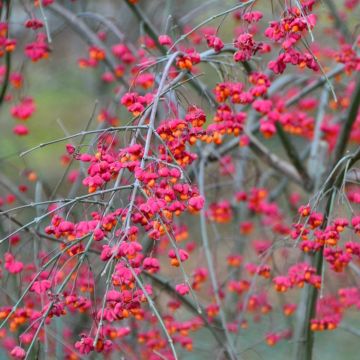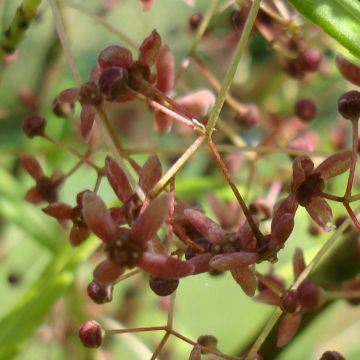Shipping country and language
Your country of residence may be:
Your country of residence is:
For a better user experience on our website, you can select:
Your shipping country:
Andorra
Austria
Belgium
Bulgaria
Canada
Chile
Croatia
Cyprus
Czechia
Denmark
Estonia
Finland
France
Germany
Greece
Hungary
Iceland
Ireland
Italy
Latvia
Lithuania
Luxembourg
Malta
Monaco
Netherlands
Poland
Portugal
Romania
Slovakia
Slovenia
Spain
Sweden
Switzerland
United Kingdom
We only deliver seed and bulb products to your country. If you add other products to your basket, they cannot be shipped.
Language:
French
German
Spanish
English
My Account
Hello
My wish lists
Plantfit
Log in / Register
Existing customer?
New customer?
Create an account to track your orders, access our customer service and, if you wish, make the most of our upcoming offers.
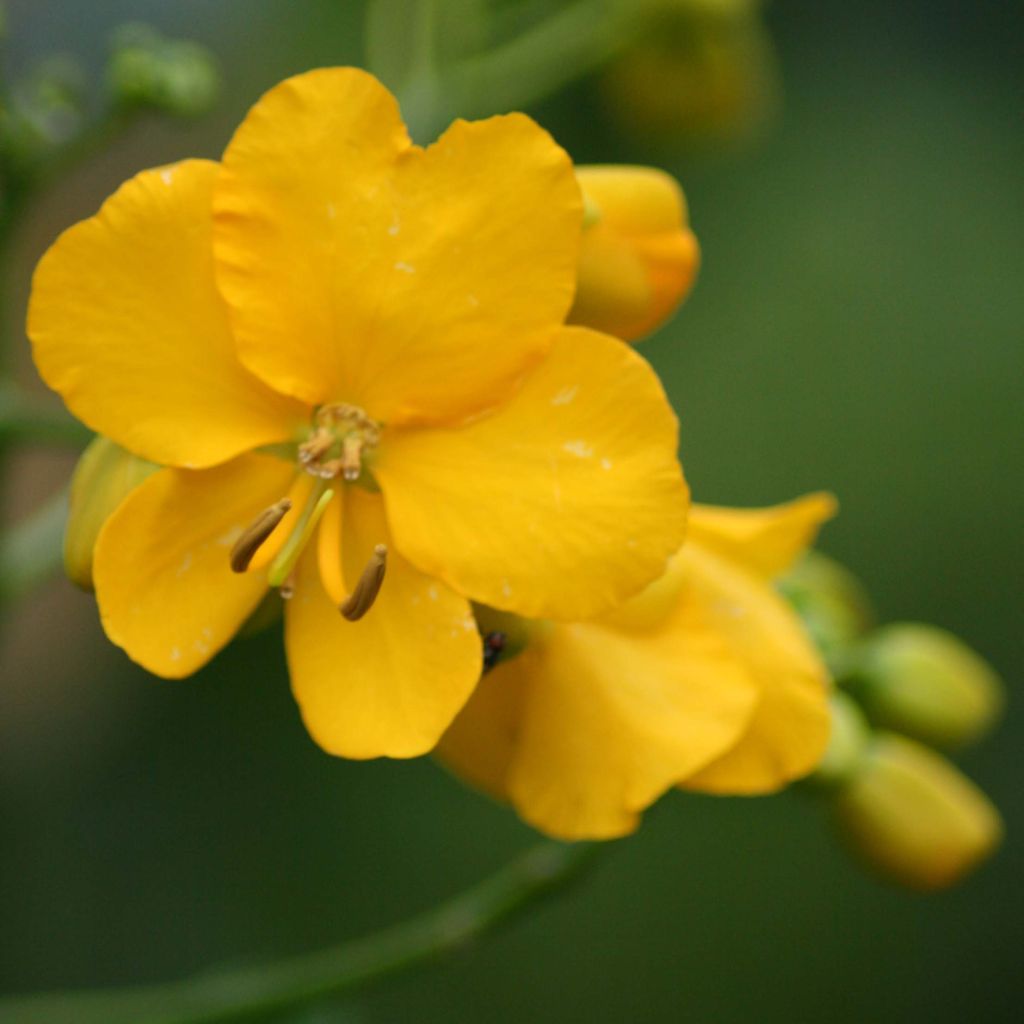

Cassia floribunda
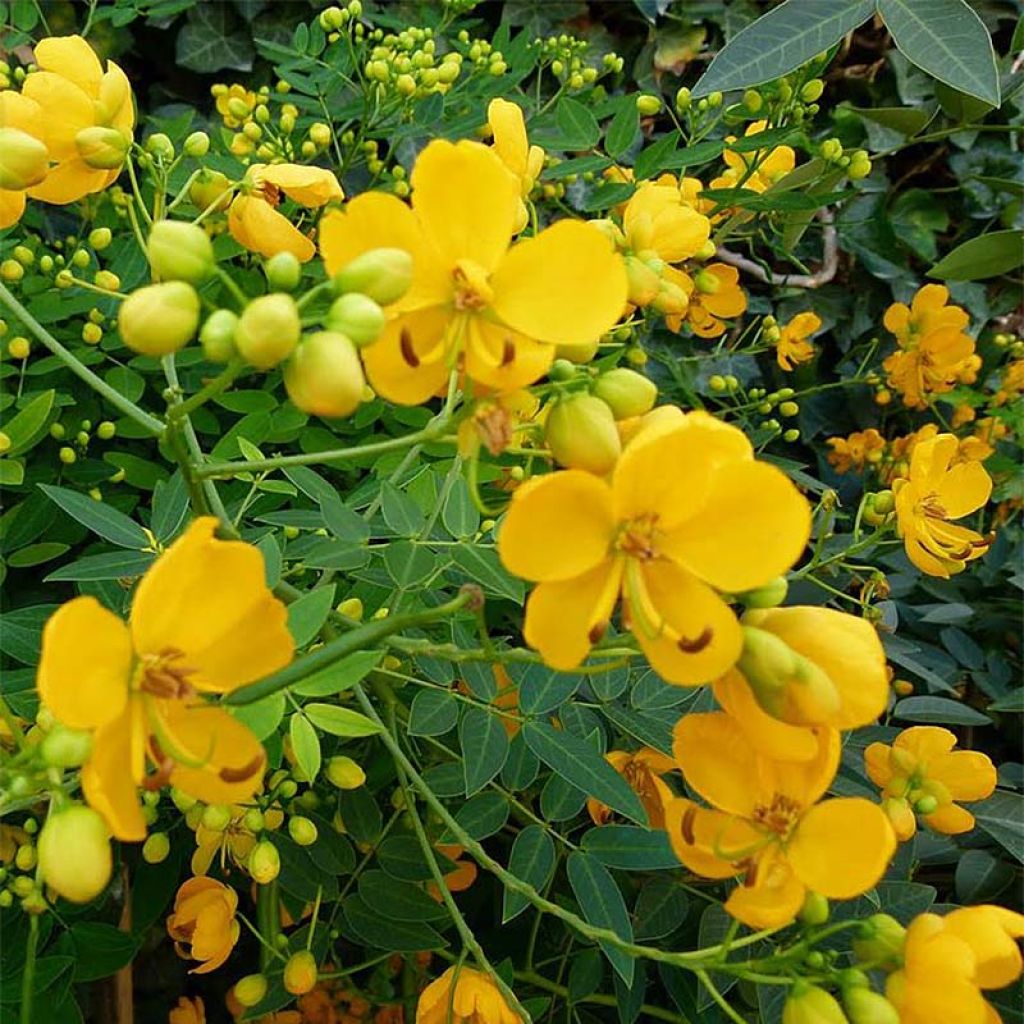

Cassia floribunda
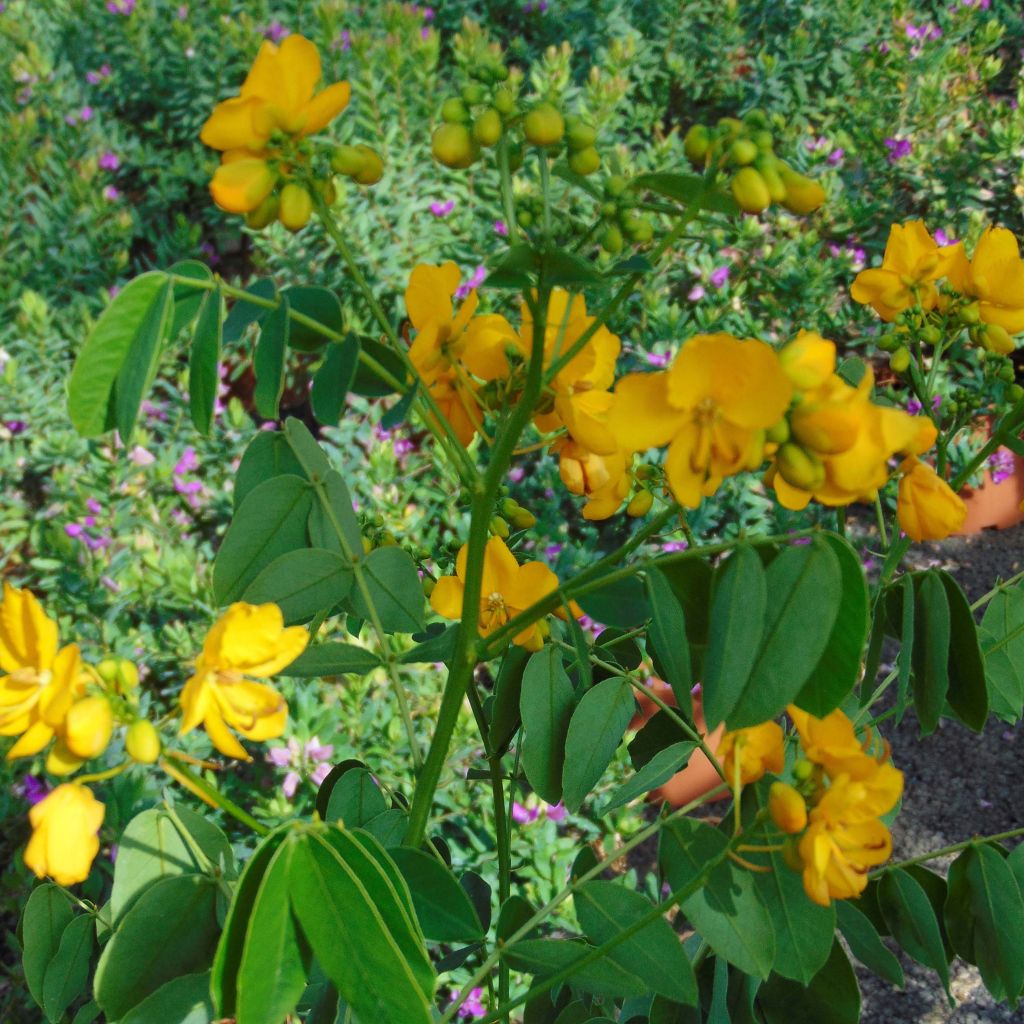

Cassia floribunda
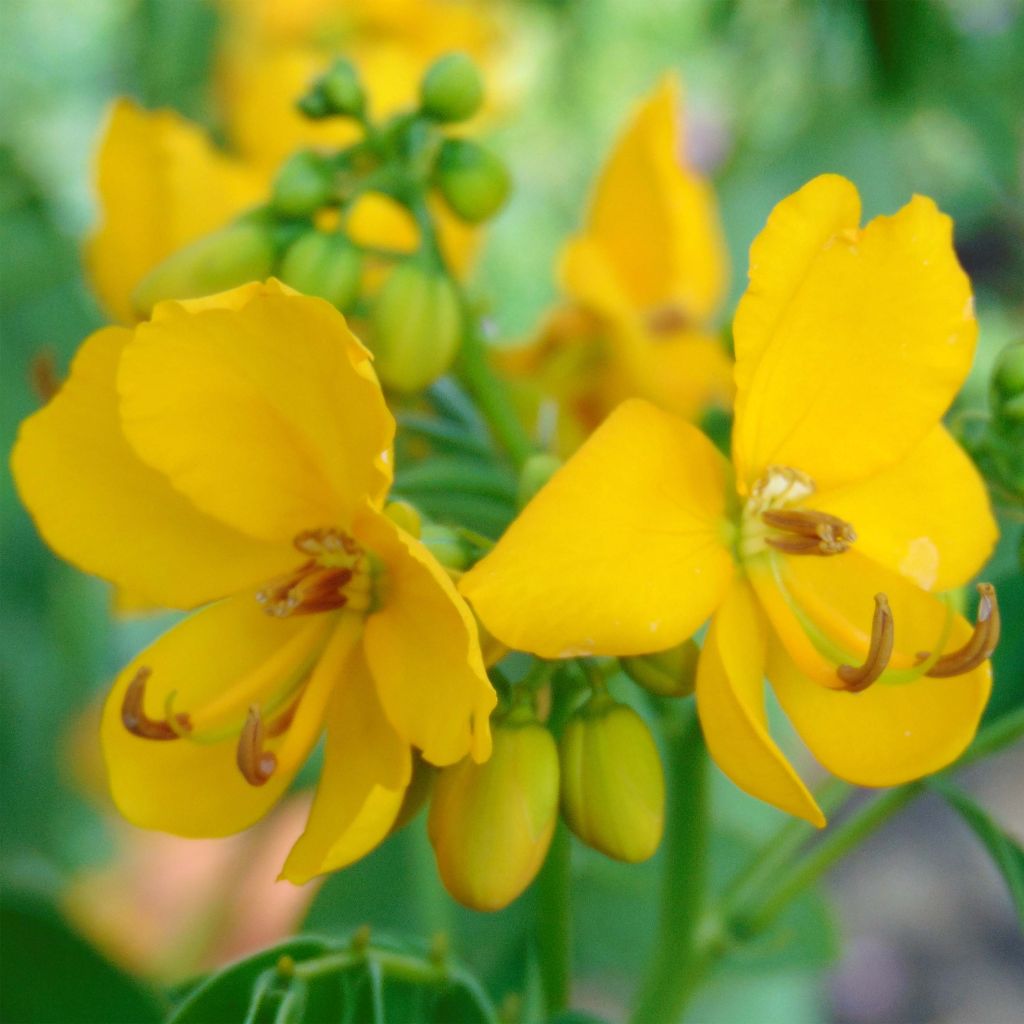

Cassia floribunda
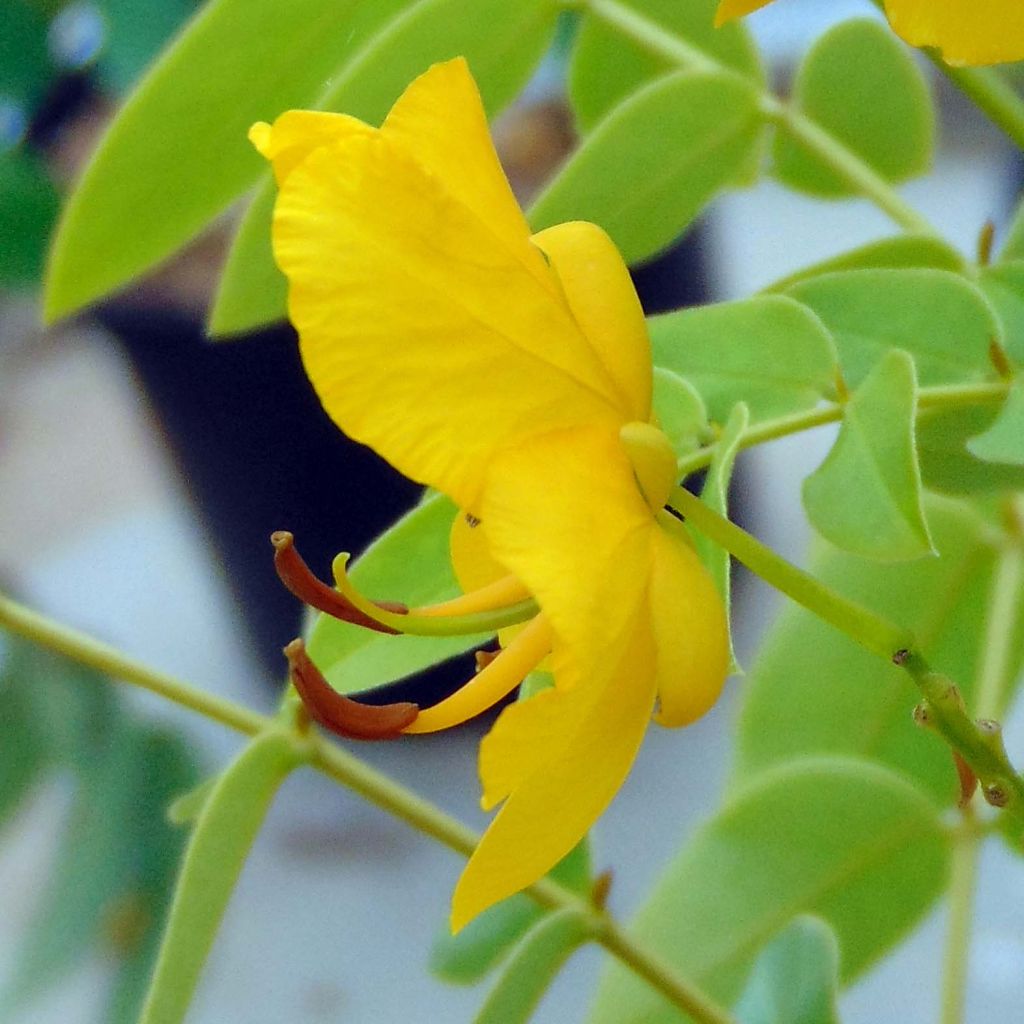

Cassia floribunda
Cassia floribunda
Cassia x floribunda
Golden Shower, Buttercup Bush, Yellow Cassia
Disaster. Parcel dispatched on Monday, received on Thursday afternoon. The 2 stems are broken, most of the flowers and leaves are also broken, the few that remain completely limp. On the other hand, the lemon tree that traveled in the same package looks in great shape.
FABRICE, 10/07/2020
Order in the next for dispatch today!
Dispatch by letter from 3,90 €.
Delivery charge from 5,90 € Oversize package delivery charge from 6,90 €.
More information
This item is not available in your country.
Shipping country:
Andorra
Austria
Belgium
Bulgaria
Canada
Chile
Croatia
Cyprus
Czechia
Denmark
Estonia
Finland
France
Germany
Greece
Hungary
Iceland
Ireland
Italy
Latvia
Lithuania
Luxembourg
Malta
Monaco
Netherlands
Poland
Portugal
Romania
Slovakia
Slovenia
Spain
Sweden
Switzerland
United Kingdom
Schedule delivery date,
and select date in basket
This plant carries a 24 months recovery warranty
More information
We guarantee the quality of our plants for a full growing cycle, and will replace at our expense any plant that fails to recover under normal climatic and planting conditions.
From 5,90 € for pickup delivery and 6,90 € for home delivery
Express home delivery from 8,90 €.
Would this plant suit my garden?
Set up your Plantfit profile →
Description
Cassia floribunda is a tender bush of mild climate, appreciated for its very long summer and autumn flowering in beautiful clusters of dark yellow flowers. This plant, belonging to the family Fabaceae, a cousin of Mimosa and Robinia, offers regular flowers that evoke golden buttons rather than peas. They bloom on foliage that is often evergreen, of a light and vibrant green, cut into large leaflets. It can be placed in a large pot to adorn the terrace during the summer in most regions. Its use in the ground, including in dry and poor soil, will be reserved for the south coast in groups or as a standalone plant.
Cassia floribunda is a very branching bush with a bushy and spreading habit and rapid growth. It is quite wide and its branches are flexible, it develops large lower branches and its light green foliage is evergreen. This variety is said to be derived from the cross-breeding of Cassia multiglandulosa, native to Mexico, Guatemala and western regions of South America, and C. septemtrionalis, another botanic species native to Mexico and Central America. It will measure 1.5 to 2 metres (5ft to 7ft) in all directions at maturity, sometimes more in favourable conditions. Its flowering lasts a long time, from June-July to November. Its cup-shaped, wide, bright yellow flowers, are gathered in clusters measuring 15 to 30 cm (5.9 to 11.8 in). This hybrid does not produce pods. Its flexible branches bear leaves cut into large, bright green leaflets, resembling those of acacias and robinias. Its hardiness does not exceed -5°C (23 °F), but its resistance to summer drought is excellent.
The Cassia floribunda is a very beautiful conservatory bush for cool climates, and a good plant for dry gardens in mild climates. Its flexible habit and vigorous lateral branching also allow it to be trained against a south-facing wall, exposed to the sun and sheltered from cold winds. When planted in the ground, it can be placed as an isolated specimen, or in a group of shrubs that appreciate the same growing conditions: Caesalpinia gilliesii, Sesbania punicea, Indigofera gerardiana, evergreen ceanothus, Solanum rantonettii or Abutilon Suntense. It can be grown in a pot, protected from winter frosts in a greenhouse or a minimally heated conservatory.
Cassia floribunda in pictures
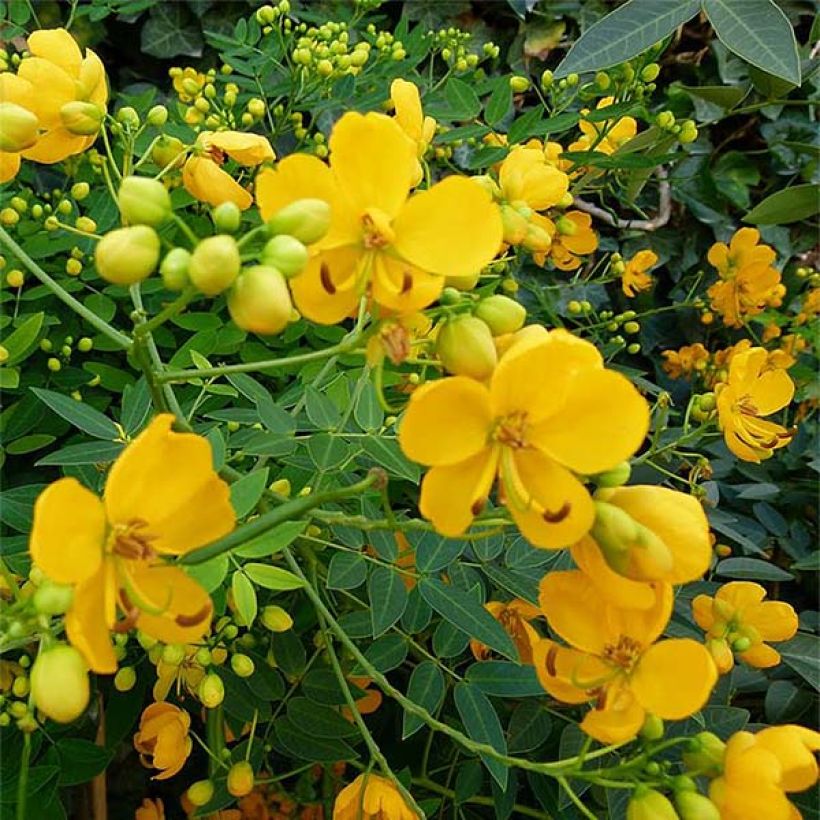

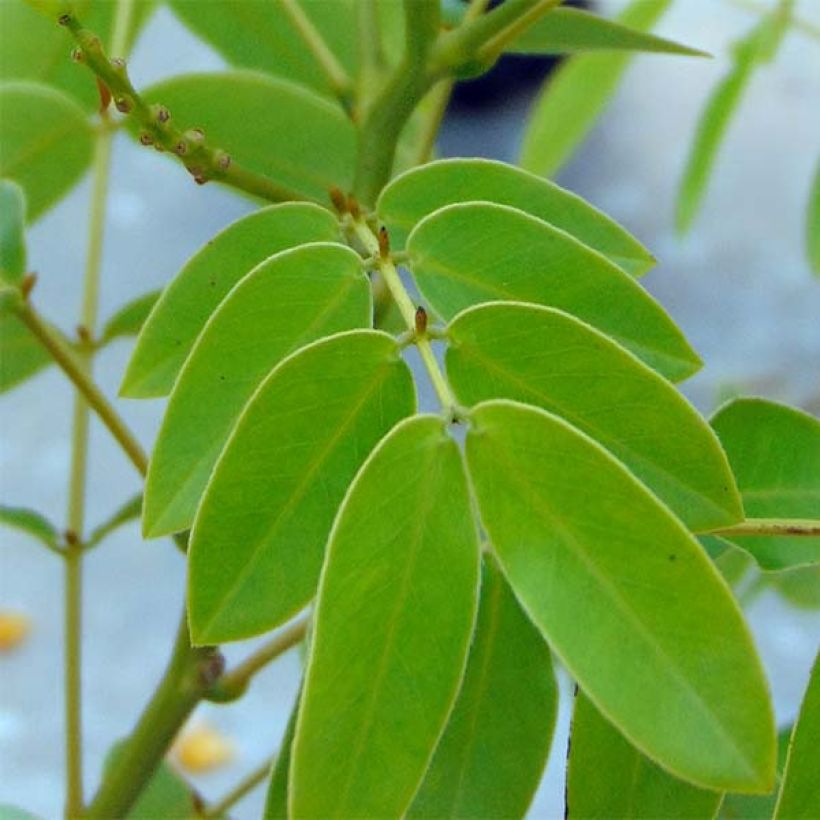

Plant habit
Flowering
Foliage
Botanical data
Cassia
x floribunda
Fabaceae (Caesalpiniaceae)
Golden Shower, Buttercup Bush, Yellow Cassia
Cultivar or hybrid
Other Cassia (Senna)
Planting and care
Cassia floribunda is best planted in April, in a very sunny exposure, sheltered from strong winds; autumn planting is reserved for regions with a very mild climate. This bush is not demanding of the nature of the soil, which must however be well-drained, as it dislikes excess water. As it tolerates drought well, watering is not necessary when grown in open ground, once the plant is well established, but occasional watering will promote the formation of flowers. Spring pruning can be done to remove branches that have suffered from the cold, and prune at the end of flowering to rebalance the habit of the bush. The Cassia is sensitive to cold; as soon as the temperatures approach 0°C (32 °F), it is advisable to install a thick mulch at its base and cover it with fleece.
In the case of container cultivation, repot in a large container every two years in spring. Water occasionally, the root ball should not completely dry out. In cold regions, it should be overwintered in a bright and cool, frost-free location.
Planting period
Intended location
Care
- , onOrder confirmed
Reply from on Promesse de fleurs
Spring-flowering shrubs
Haven't found what you were looking for?
Hardiness is the lowest winter temperature a plant can endure without suffering serious damage or even dying. However, hardiness is affected by location (a sheltered area, such as a patio), protection (winter cover) and soil type (hardiness is improved by well-drained soil).

Photo Sharing Terms & Conditions
In order to encourage gardeners to interact and share their experiences, Promesse de fleurs offers various media enabling content to be uploaded onto its Site - in particular via the ‘Photo sharing’ module.
The User agrees to refrain from:
- Posting any content that is illegal, prejudicial, insulting, racist, inciteful to hatred, revisionist, contrary to public decency, that infringes on privacy or on the privacy rights of third parties, in particular the publicity rights of persons and goods, intellectual property rights, or the right to privacy.
- Submitting content on behalf of a third party;
- Impersonate the identity of a third party and/or publish any personal information about a third party;
In general, the User undertakes to refrain from any unethical behaviour.
All Content (in particular text, comments, files, images, photos, videos, creative works, etc.), which may be subject to property or intellectual property rights, image or other private rights, shall remain the property of the User, subject to the limited rights granted by the terms of the licence granted by Promesse de fleurs as stated below. Users are at liberty to publish or not to publish such Content on the Site, notably via the ‘Photo Sharing’ facility, and accept that this Content shall be made public and freely accessible, notably on the Internet.
Users further acknowledge, undertake to have ,and guarantee that they hold all necessary rights and permissions to publish such material on the Site, in particular with regard to the legislation in force pertaining to any privacy, property, intellectual property, image, or contractual rights, or rights of any other nature. By publishing such Content on the Site, Users acknowledge accepting full liability as publishers of the Content within the meaning of the law, and grant Promesse de fleurs, free of charge, an inclusive, worldwide licence for the said Content for the entire duration of its publication, including all reproduction, representation, up/downloading, displaying, performing, transmission, and storage rights.
Users also grant permission for their name to be linked to the Content and accept that this link may not always be made available.
By engaging in posting material, Users consent to their Content becoming automatically accessible on the Internet, in particular on other sites and/or blogs and/or web pages of the Promesse de fleurs site, including in particular social pages and the Promesse de fleurs catalogue.
Users may secure the removal of entrusted content free of charge by issuing a simple request via our contact form.
The flowering period indicated on our website applies to countries and regions located in USDA zone 8 (France, the United Kingdom, Ireland, the Netherlands, etc.)
It will vary according to where you live:
- In zones 9 to 10 (Italy, Spain, Greece, etc.), flowering will occur about 2 to 4 weeks earlier.
- In zones 6 to 7 (Germany, Poland, Slovenia, and lower mountainous regions), flowering will be delayed by 2 to 3 weeks.
- In zone 5 (Central Europe, Scandinavia), blooming will be delayed by 3 to 5 weeks.
In temperate climates, pruning of spring-flowering shrubs (forsythia, spireas, etc.) should be done just after flowering.
Pruning of summer-flowering shrubs (Indian Lilac, Perovskia, etc.) can be done in winter or spring.
In cold regions as well as with frost-sensitive plants, avoid pruning too early when severe frosts may still occur.
The planting period indicated on our website applies to countries and regions located in USDA zone 8 (France, United Kingdom, Ireland, Netherlands).
It will vary according to where you live:
- In Mediterranean zones (Marseille, Madrid, Milan, etc.), autumn and winter are the best planting periods.
- In continental zones (Strasbourg, Munich, Vienna, etc.), delay planting by 2 to 3 weeks in spring and bring it forward by 2 to 4 weeks in autumn.
- In mountainous regions (the Alps, Pyrenees, Carpathians, etc.), it is best to plant in late spring (May-June) or late summer (August-September).
The harvesting period indicated on our website applies to countries and regions in USDA zone 8 (France, England, Ireland, the Netherlands).
In colder areas (Scandinavia, Poland, Austria...) fruit and vegetable harvests are likely to be delayed by 3-4 weeks.
In warmer areas (Italy, Spain, Greece, etc.), harvesting will probably take place earlier, depending on weather conditions.
The sowing periods indicated on our website apply to countries and regions within USDA Zone 8 (France, UK, Ireland, Netherlands).
In colder areas (Scandinavia, Poland, Austria...), delay any outdoor sowing by 3-4 weeks, or sow under glass.
In warmer climes (Italy, Spain, Greece, etc.), bring outdoor sowing forward by a few weeks.
